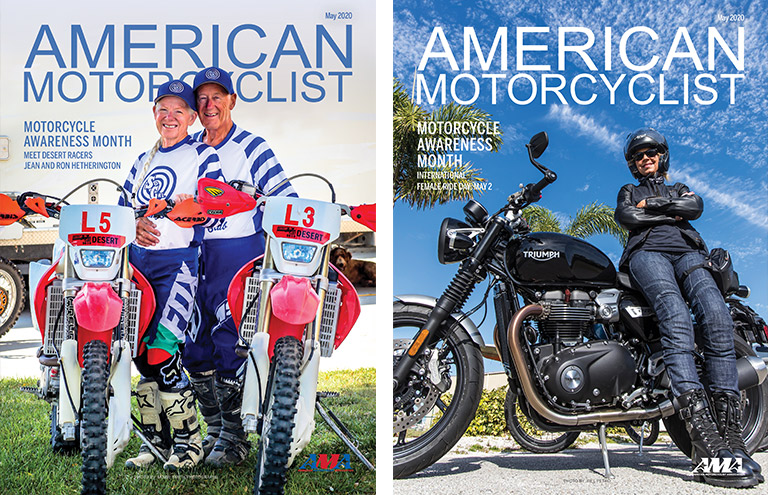AMERICAN MOTORCYCLIST MAY 2020
Meet Ron and Jean Hetherington
The Typical Septuagenarian Motorcycle Racing Couple
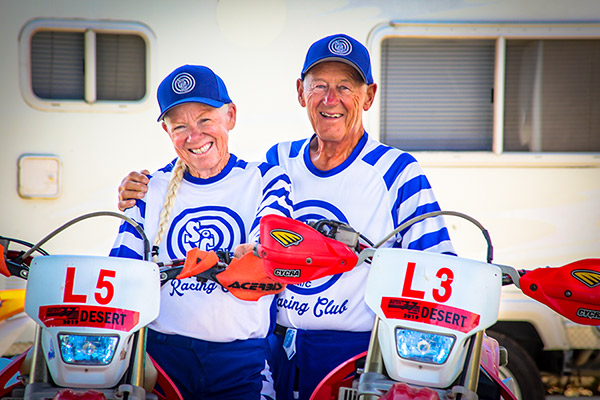
By Mindy Smith
Ron and Jean Hetherington are AMA members who live on a quiet cul-de-sac in Huntington Beach, Calif., where their neighbors know them well. They are the original owners of their home of 55 years, and their social skills could rival those of Johnny Carson.
I know, because I live next door. Ron and Jean are well known for the passions they share in life—two in particular.
The first is the love they share for their family.
With their son living close by and their daughter and three grandsons living next door, the phrase “open door policy” more than applies to what is known in the neighborhood as “The Hetherington Compound.” They could be a typical couple enjoying life in their 70s, were it not for another passion they share—racing motorcycles.
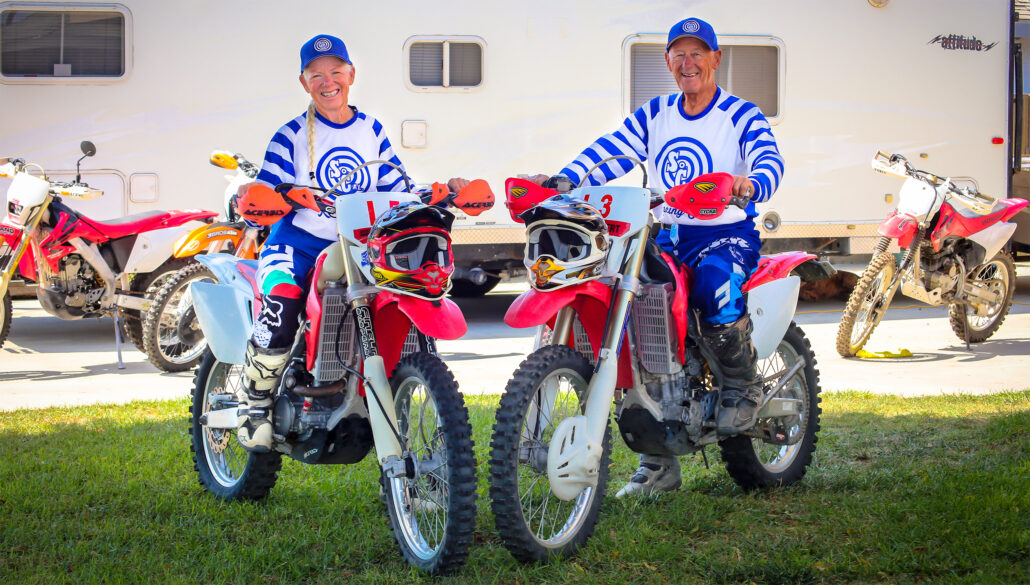
How they got started
Ron began desert racing with the men’s division in 1970 at 30 years old. Jean didn’t start racing the women’s division until she was 40.
In this male-dominated sport, couples were few and far between. Ron admits to witnessing a number of divorces caused by the husbands’ obsession with desert racing.
Not many women take to the sport as well as Jean. Her first race in 1985 was the 200-mile Barstow to Vegas race, which she completed in eight hours, placing third.
The following year, she placed first in her class.
Jean was the first woman to join the AMA-chartered Desert Motorcycle Club.
With a race almost every weekend, about 20 races a year since the 1980s, Jean says she didn’t really get serious about racing until she was 68.
“I couldn’t wait to turn 70, so I could compete with the men,” she said of competing in the Legends class.
The Legends class was developed so older riders could continue to race in events with competitors of equal skill level. The class is not separated by gender.
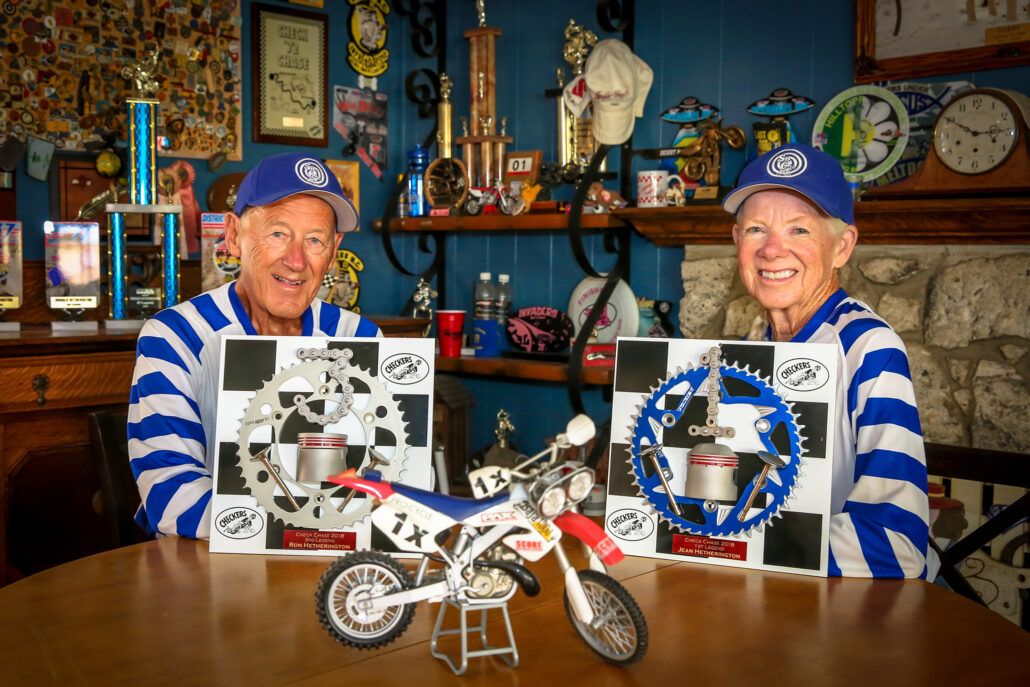
Happy, helpful couple
Racing side by side, Ron and Jean navigate the course while staying ahead of the pack and almost always finishing among the top three.
Extreme sports have a risk all their own without adding extreme weather conditions, upping the ante.
Asked about their most difficult challenges and racing injuries, Ron said he endured 120-degree heat before the “luxury” of CamelBak water containers that allow riders to hydrate throughout the race. Before CamelBaks, water could only be consumed at pit stops.
Ron’s injury report is a quick read. He suffered a broken ankle early in his career, about 40 years ago.
Last year, Jean suffered her first serious injury. She fell from her bike and hit her face on a rock that broke through her goggles, making contact with her left eye-socket. This gave her double vision and a slight concussion.
Her only regret, of course, was that her fall had kept her from completing the race.
Ron and Jean are always quick to stop and help another rider who has fallen or is having some other difficulty.
For Ron and Jean, being involved in desert racing doesn’t stop at competing.
They are known for their volunteer work, helping set up the race, tying pink ribbon, setting danger markers and running a pitstop, when needed.
They ran a pitstop for Honda in the Baja 250, 500 and 1000 in Baja Mexico for 13 years. It takes two and half days of off-road driving to get to the pit location and two days to set up and break down—all in temperatures upwards of 119 degrees.
Why?
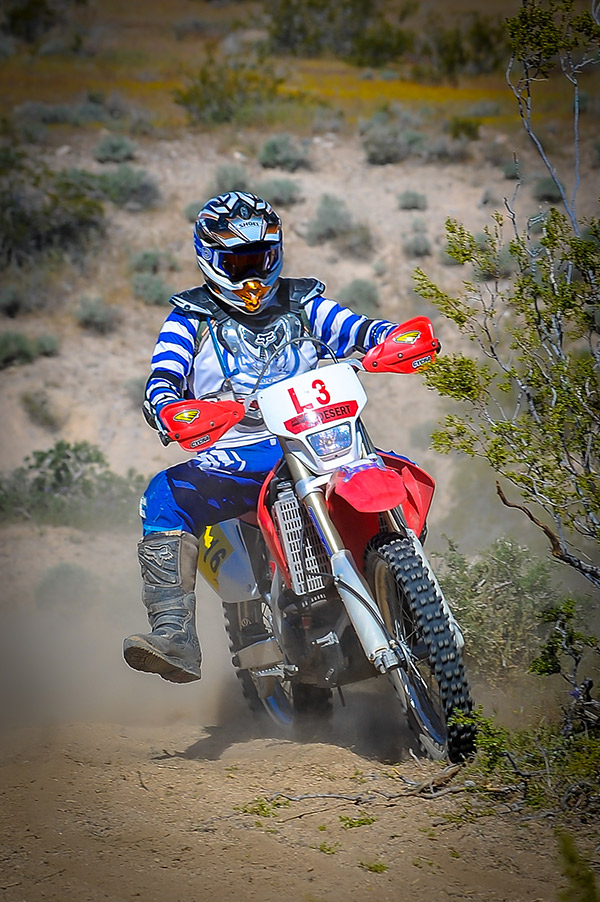 “We have a passion for it,” Ron said. “We love the challenge of not knowing where the course will take us. The exhilaration of the finish, when we know we have succeeded. And the camaraderie that is there with all the competitors.”
“We have a passion for it,” Ron said. “We love the challenge of not knowing where the course will take us. The exhilaration of the finish, when we know we have succeeded. And the camaraderie that is there with all the competitors.”
The ‘other’ two wheels
During the week, when they are not somehow involved in the motorcycle club, they are once again riding together on their road bicycles.
They belong to the Bicycle Club of Irvine, and ride five days a week an average of 42 miles a day.
It’s easy to pick them out, because they confidently sport matching bicycle jerseys.
Having ridden in numerous long distance and organized rides—including the 7,000-mile Canadian to Mexican border, the Missouri River to Mississippi River (RAGBRI) and several rides in different countries, including Italy, Holland, Spain, Amsterdam, Ireland and Croatia—they are always looking for new adventures and challenges when it comes to road biking.
Every Fourth of July, Ron and Jean get decked out from head to spoke in red, white and blue so they can ride their beach cruisers down Main Street in Huntington Beach to watch the nationally televised Fourth of July Parade.
People see them and call them Mr. and Mrs. America and comment on how great their decorations are.
I asked Ron and Jean this same question separately, “Would you still ride if Ron/Jean couldn’t do it anymore?”
They each had the same response, “No. What would be the point?”
But that’s Ron and Jean. They love their family. They love celebrating freedom and the freedom that riding brings them. And, most of all, they love each other.
So what is desert racing?
Desert motorcycle racing, like most amateur events, has very few spectators who aren’t somehow involved in the race as part of a pit crew, organizer or competitor.
Extreme weather conditions in remote locations require everyone involved to be as resilient as the desert landscape itself. Ron and Jean define that resilience.
There is no typical desert race.
Competitors begin by sitting at the starting line, side by side with riders of a similar skill level, with their engines off. There can be as many as 200 riders starting a race at once.
A large banner is raised for all the riders to see, which indicates the one-minute warning. Once the minute is up, the banner is dropped, and all the racers start their bikes and take off.
The start of the race is called the “Bomb Run.” As the racers jockey for position, only the rider in front has a clear view of the course. All the racers behind the front runner face a plume of dirt, rocks, debris and desert sand, making it difficult to see and breathe.
The course is bounded by ribbon, arrows, danger markers and hidden checks to keep riders on track.
Courses vary in length from 24 miles—which can take two hours—up to 200 miles, challenging a rider for eight hours or longer.
Racers must navigate tight spaces between boulders, ride steep hills and valleys and battle deep, loose sand and large rocks. A rider who falls must pick up the 250-plus-pound bike and continue riding.
Pitstops are available at designated points along the course (about 40-50 miles apart) for rides to gas up, grab a beverage, clean their goggles or attend to any minor injuries. A pitstop is not to be mistaken for a place to relax. The average time for a pitstop is 15 seconds.

